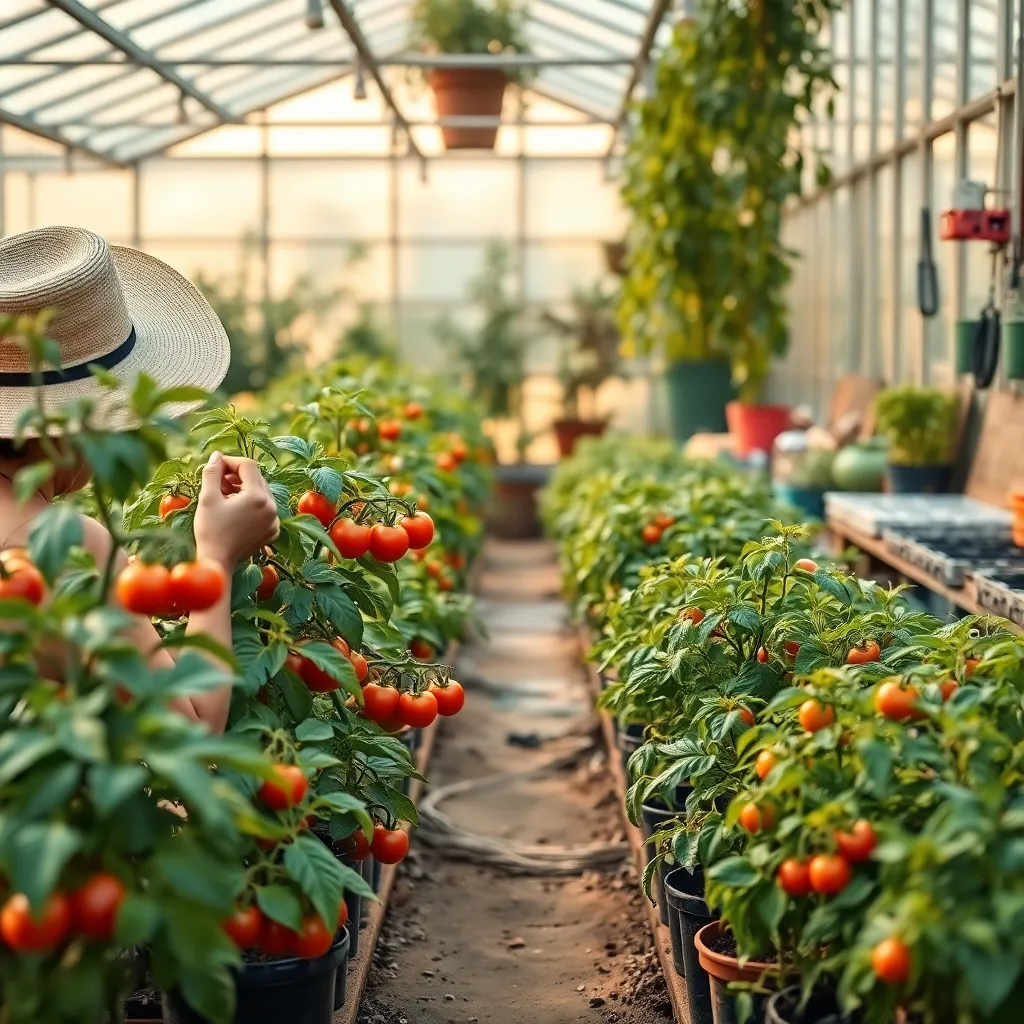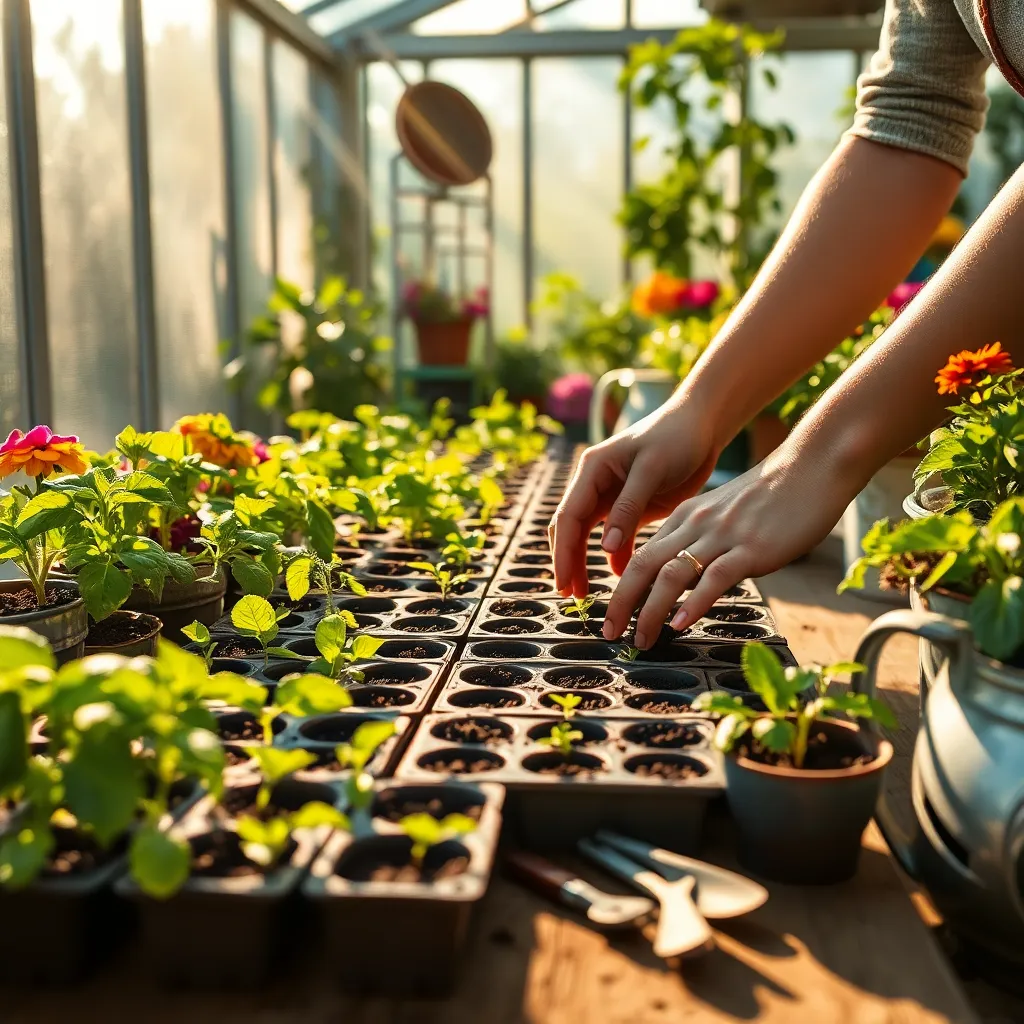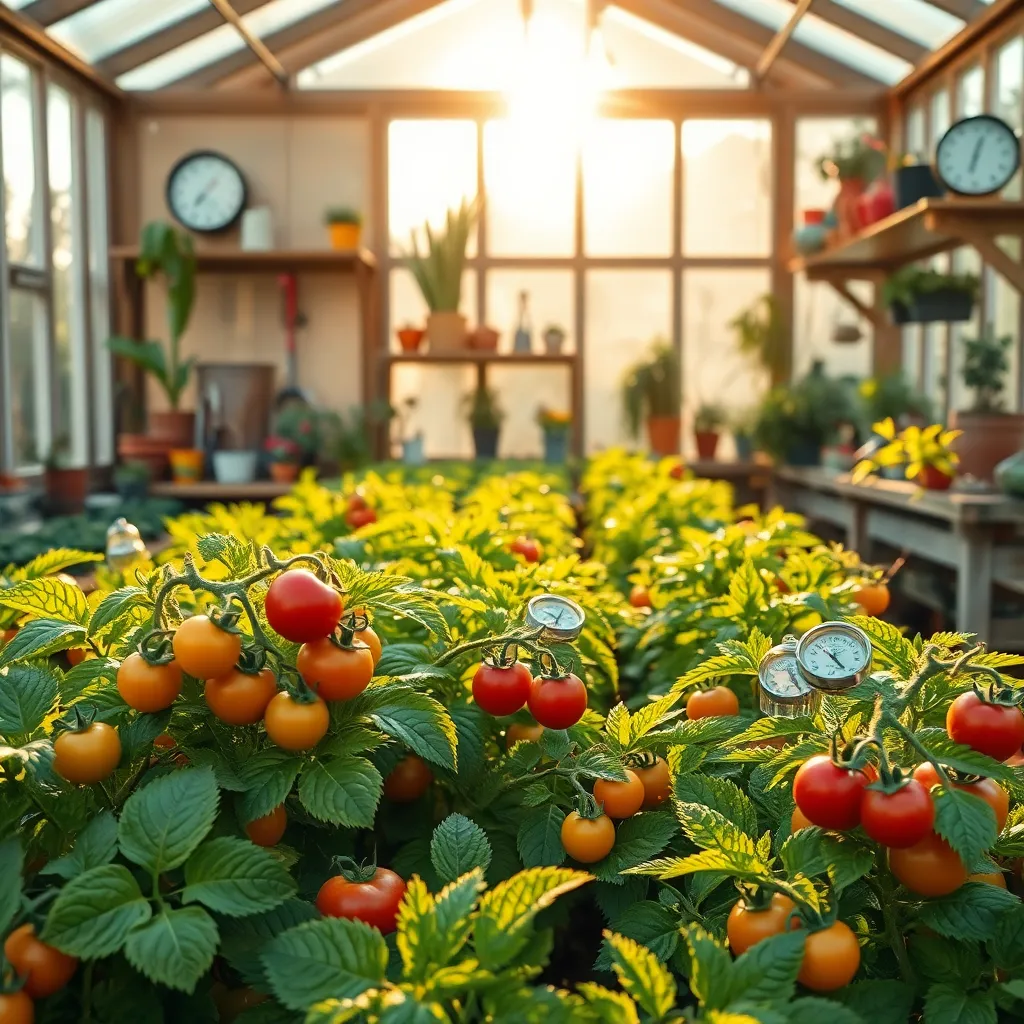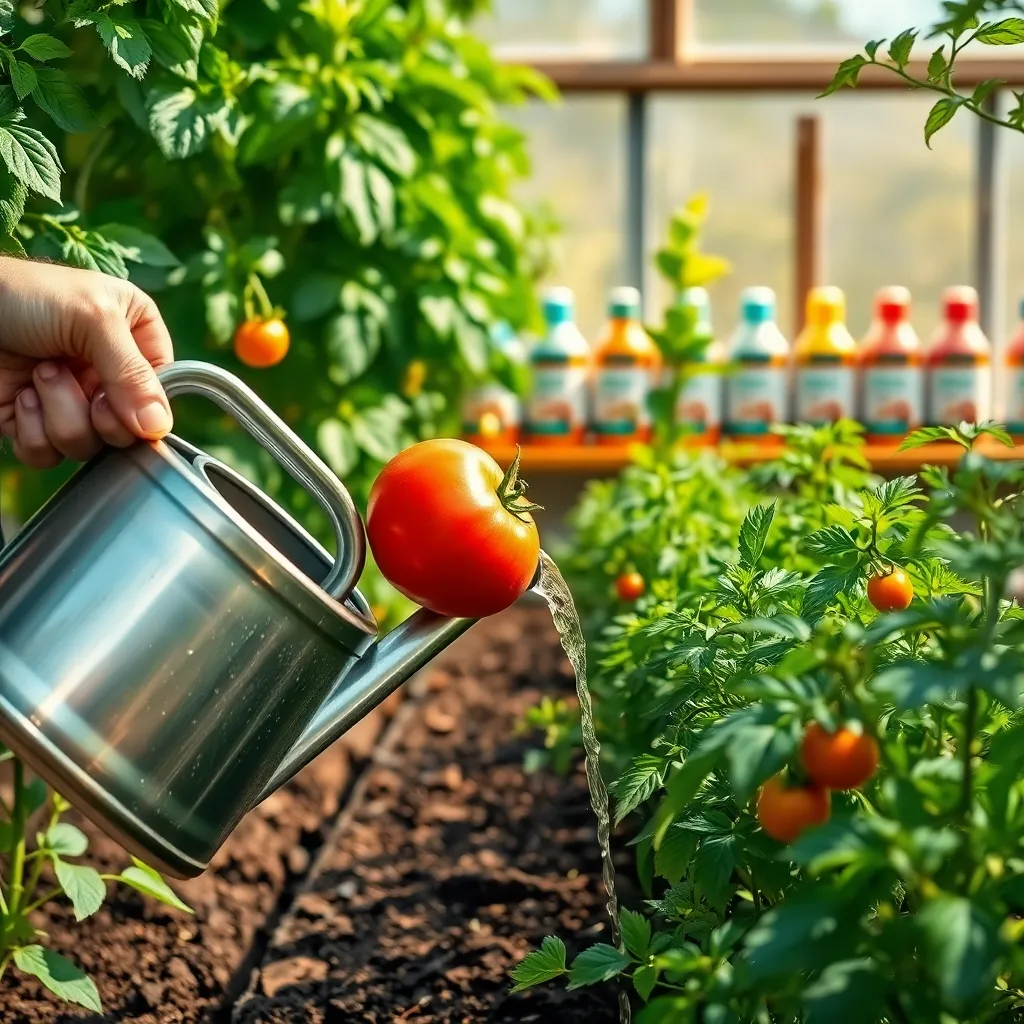Imagine biting into a juicy, homegrown tomato in the middle of winter, and savoring that burst of flavor reminiscent of sun-drenched summer days. Growing tomatoes in a greenhouse can make this dream a reality, offering a rewarding venture for both novice and seasoned gardeners alike. This process not only extends your growing season but also provides the perfect environment for these sun-loving plants to thrive, free from unpredictable weather and pests.
Whether you’re just starting your gardening journey or have a few seasons under your belt, cultivating tomatoes in a greenhouse offers some unique challenges and incredible benefits. This guide will walk you through the essentials, from selecting the right tomato varieties to mastering the art of temperature and humidity control, ensuring your greenhouse becomes a haven for your tomato plants. By the end of this article, you’ll be equipped with the knowledge to nurture robust, productive tomato plants and enjoy a bountiful harvest year-round.
Select High-Quality Tomato Seeds

Choosing the right tomato seeds is critical to a successful greenhouse harvest. Start by selecting seeds from reputable suppliers to ensure high germination rates and healthy plants.
Look for seed varieties that are specifically labeled as suitable for greenhouse growing. These varieties often have been bred for disease resistance and optimal growth in controlled environments.
For beginners, it’s best to start with determinate tomato varieties which tend to be more manageable and require less pruning. If you’re an experienced gardener, consider trying indeterminate varieties that can produce fruit over a longer season.
When selecting seeds, pay attention to the tomato’s final size and flavor profile, as these factors can greatly affect your enjoyment of the fruit. Consider your personal preferences and intended use, whether for fresh eating, canning, or making sauces.
Prepare Optimized Greenhouse Environment

Creating an optimized greenhouse environment is crucial for thriving tomato plants. Start by ensuring your greenhouse maintains a consistent temperature between 70°F and 85°F during the day, and doesn’t drop below 60°F at night.
To maintain these temperatures, you can use a combination of heaters and ventilation systems. Invest in a reliable thermostat to monitor these levels and consider using a shade cloth during the hottest parts of the day to prevent overheating.
Humidity plays a vital role in tomato growth, with the ideal level being between 50% and 70%. You can increase humidity by placing water trays around the greenhouse or using a misting system, but ensure there’s adequate airflow to prevent fungal diseases.
Soil quality is another essential factor, and using a rich, well-draining potting mix will support healthy roots. Consider adding organic matter such as compost or well-rotted manure to enhance soil fertility and structure.
- Water regularly but avoid overwatering; the soil should be consistently moist but not waterlogged.
- Ensure plants get at least 8-10 hours of sunlight each day, supplementing with grow lights if natural light is insufficient.
- Prune leaves and stems to improve air circulation and sunlight penetration.
By carefully managing these environmental factors, you can create an ideal growing space that encourages robust and productive tomato plants. Experienced gardeners might also consider using automatic climate control systems to fine-tune these conditions, maximizing growth potential.
Plant Seeds in Seed Trays

To start growing tomatoes in your greenhouse, begin by planting seeds in seed trays. First, choose a high-quality seed starting mix that provides good drainage and supports healthy root development.
Fill each compartment of the seed tray with the mix, leaving about half an inch of space at the top. Moisten the soil gently with a spray bottle to ensure it’s damp but not soggy, which helps seeds germinate effectively.
Place one or two tomato seeds in each compartment, covering them lightly with a thin layer of soil. As a general rule, aim to plant seeds at a depth of about twice their size to promote proper growth.
Label each tray with the tomato variety and planting date to keep track of your plants. After planting, position the trays in a warm location with indirect light, maintaining a consistent temperature around 70-75°F (21-24°C) to encourage germination.
Water the seed trays with care to prevent overwatering, which can lead to mold growth. Using a bottom-watering technique, such as placing trays in a shallow pan of water, can help control moisture effectively.
As seedlings emerge, provide them with sufficient light by placing them under grow lights or in a sunny spot. Ensure the light source is close to the seedlings, about 2-3 inches away, to prevent leggy growth and foster strong, healthy plants.
Maintain Optimal Temperature and Humidity

To ensure your tomato plants thrive in a greenhouse, maintaining optimal temperature and humidity is crucial. Greenhouses can easily heat up during the day, so aim to keep the temperature between 70°F and 85°F (21°C to 29°C) for the best growth.
Use a thermometer to monitor the temperature regularly, adjusting ventilation as needed. Ventilation can be enhanced by opening doors, windows, or using exhaust fans, which will help keep the environment stable.
Humidity is another important factor in a greenhouse setting, as tomatoes prefer a humidity level between 50% and 70%. To achieve this, consider using a hygrometer to measure humidity levels and employ misters or humidifiers to adjust as necessary.
For more advanced gardeners, installing an automated climate control system can help maintain ideal conditions consistently. This system can automatically regulate temperature and humidity, saving you time and effort while ensuring your tomatoes receive the best care possible.
Provide Consistent Watering and Fertilization

Ensuring consistent watering is crucial for growing healthy tomatoes in a greenhouse. Tomatoes require regular moisture, but it’s important to avoid waterlogging the soil. Use a drip irrigation system for precise watering, maintaining soil moisture without over-saturating. Check the soil regularly by inserting your finger about an inch deep; water when the soil feels dry at this level.
Tomatoes thrive with a balanced fertilization regimen, supporting their vigorous growth and fruit production. Opt for a balanced fertilizer, such as one with equal parts nitrogen, phosphorus, and potassium (NPK 10-10-10). Apply the fertilizer every two to three weeks, following the manufacturer’s instructions to prevent overfeeding. For organic options, consider using compost or well-rotted manure to enrich the soil naturally.
In addition to basic fertilization, advanced gardeners might incorporate Epsom salts to provide magnesium, which supports fruit development. Dissolve one tablespoon of Epsom salts in a gallon of water and apply it monthly as a foliar spray or soil drench. Monitor your plants for signs of nutrient deficiency, such as yellowing leaves, and adjust your fertilization routine accordingly.
Maintaining consistent watering and fertilization helps prevent common issues like blossom end rot and encourages bountiful harvests. Use mulch to help retain soil moisture and regulate temperature, which is especially beneficial in a greenhouse setting. Keep track of your watering and fertilization schedule in a gardening journal to ensure consistency and make adjustments as needed.
Conclusion: Growing Success with These Plants
In nurturing a thriving greenhouse, much like a flourishing relationship, there are key principles to keep in mind. First, provide the right environment—whether it’s the right temperature for tomatoes or emotional safety in relationships. Second, ensure consistent nourishment through balanced nutrients or regular communication. Third, address issues promptly, be it pest control or resolving misunderstandings. Fourth, allow room for growth, respecting space for roots and individuality alike. Finally, celebrate the harvest, cherishing the fruits of your labor and shared experiences.
As an actionable step, consider dedicating time this week to assess and enhance one aspect of your relational “greenhouse,” whether it’s planning a date to reconnect or having an honest conversation. Remember, a relationship, like gardening, thrives on consistent, thoughtful care.
Bookmark this article as your go-to guide, ensuring you have a trusty companion to revisit these essential concepts whenever needed. By applying these principles, you’re not just growing tomatoes—you’re cultivating a relationship ripe for success and fulfillment. Embrace the journey ahead, confident that with each step, you’re nurturing a bond that stands the test of time.
